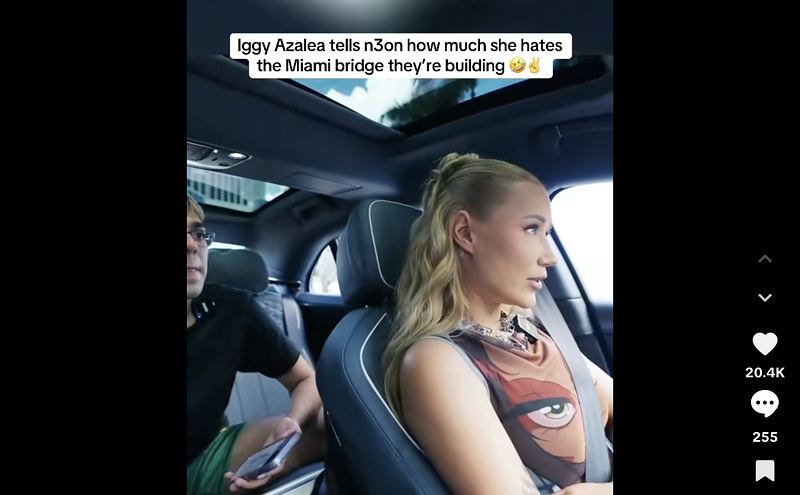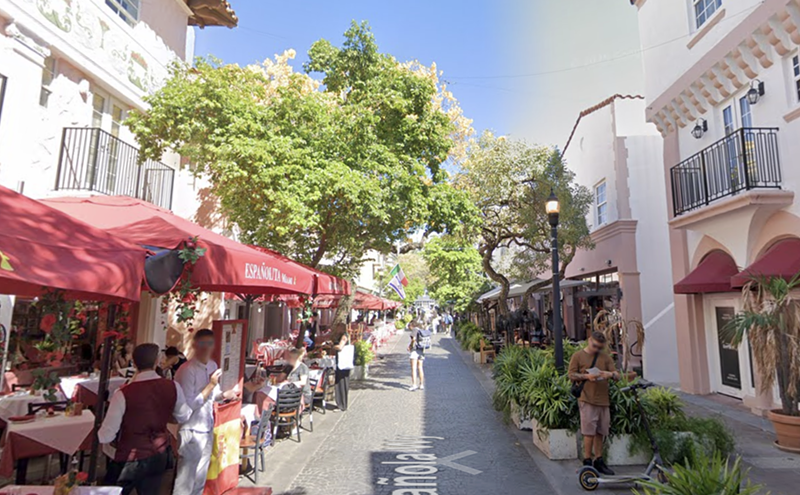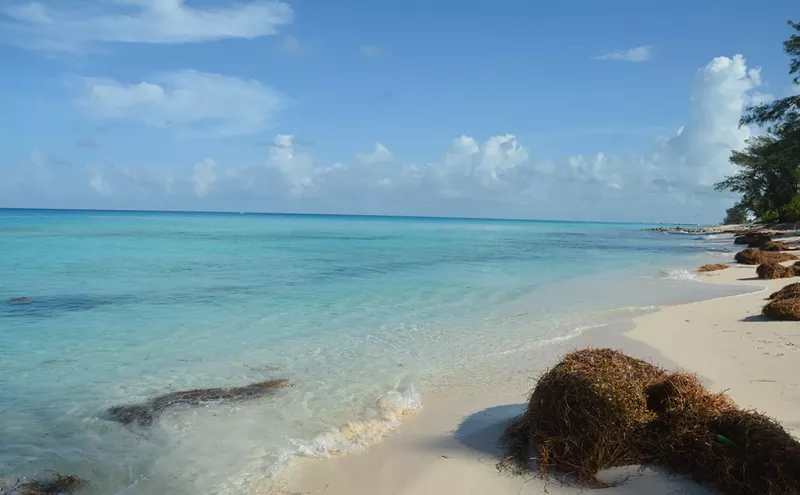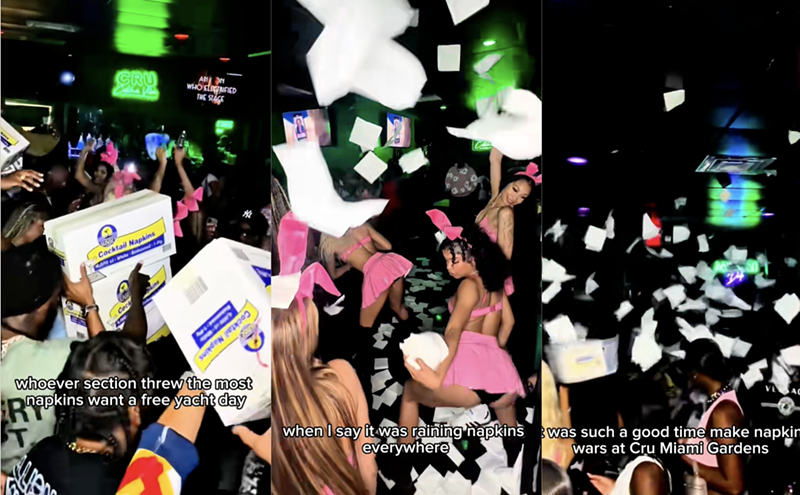Jenny Brillhart gestures around the stark industrial interior of her Little River studio to explain the visual inspiration for her paintings of cool, dark shapes and empty urban scenes.
"My previous work was much more insular within this space only," Brillhart says, calling the works "pretty abstract."
Fairgoers at Pulse Miami Beach will see a different side of an artist who has been turning heads since relocating to Miami from New York in 2003. Instead of drawing inspiration from a raw Florida warehouse, Brillhart was influenced by a recent trip to rural Maine, where she photographed mountains of waste: discarded mattresses, tarps, and electrical appliances.
"Coming back to Miami, sort of thinking about that previous practice of still lifes... it was suddenly about finding something in almost nothing, something that's normally not painting," she says.
Brillhart is half of the equation that Emerson Dorsch Gallery is formulating to keep Art Basel local this year. As one of only two Miami-based galleries chosen to exhibit at Pulse, the venerable gallery chose to feature Brillhart and fabric artist Frances Trombly. The two will be featured in the Conversations section of the tent fair, a platform for galleries to explore aesthetic dialogues between two of their artists.
Emerson Dorsch's choice echoes a trend in 2015: Miami-based artists are finding more platforms to celebrate their work during Basel, a star-studded affair where the city has too often forgotten the artists and galleries here all year long.
Many local galleries, sick of chasing an event that seems to have little in common with the interests of Miami's arts community, have turned inward, offering shows by local artists such as Nicolas Lobo at Gallery Diet's new Little Haiti space. Anthony Spinello's two Basel-week shows — Littlest Sister Art Fair and the "Full Moon" exhibition at his new space in Little River — feature local artists. Then there are the Miamians returning home after striking art-world gold, like Daniel Arsham at YoungArts and Firelei Báez at Pérez Art Museum Miami.
"I love Miami for making art. I'm never without inspiration."
tweet this
The trend is a resistance of sorts — a refusal to bend to the description of Miami as a sexy town covered with neon and devoid of its own culture. As Art Basel grows into a nearly monthlong event with multiple tent fairs, pop-up shows, and celebrity sightings, the local arts community wants to be seen on its own terms.
That's certainly the case with Brillhart and Trombly, artists whose ever-evolving practices are deeply tied to art-making in the city.
Brillhart graduated from Smith College and the New York Academy of Art before moving to South Florida, where she's taught at ArtCenter/South Florida, the University of Miami, and New World School of the Arts.
"I love Miami for making art," Brillhart says. "I'm never without inspiration."
She's shown her work both internationally and across the city, but Emerson Dorsch has been her home for quite some time. There, Brillhart has shown her elegant paintings that play with the boundaries between abstraction and representation.
Her new work, though, is motivated by
By leaving her studio space and basing her paintings on the scenes she found in rural Maine, Brillhart can tell deeper stories with the works on display at Pulse. "It's pretty easy to run away from
That's not to say the narratives in her new paintings are easy to grab hold of. These paintings aren't a pat political statement on detritus or waste, for example. "They're more philosophically about beauty," she
Finding the beauty in
Her work will be featured alongside that of Trombly, who is half of the duo that runs the gallery Dimensions Variable. Born in Miami in 1976, Trombly studied at the Maryland Institute College of Art in Baltimore before moving back to South Florida and cofounding the gallery. Although Dimensions Variable is on a break after losing its space downtown earlier this year, Trombly is equally well known for her intricately rendered fabric pieces.
Like Brillhart, Trombly will show work that's the result of what Emerson Dorsch co-owner Tyler Emerson-Dorsch describes as "shifts in her process, her focus, and her attitude."
All of Trombly's work originates on a 38-inch loom tucked into the corner of her Design District studio. "I bought it 15 years ago," she says. "It has a lot of wear."
Her earlier pieces largely concentrated on rendering familiar mass-produced objects: an intricately woven welcome mat or a beautifully handmade mop. "In the past, it was about control," Trombly says, "so much about control, about these subtle details that you can never really see."
But lately, she says, her work is more about letting go of the control, allowing mistakes and "deconstructing the material." Between 2009 and 2010, for instance, Trombly made a series called Paintings that consisted solely of handwoven canvases mounted on stretchers. That abstract series was the initial shift toward her new work.
"I thought of Agnes Martin," she says, referring to the American minimalist painter. "These lines, the minimalism that happens, that's exactly what is in this material. It's right there; it's on the clothes that we wear, on the sheets that we make our bed with."
Her work for Pulse is very minimalistic, but that quality allows viewers to hone in on the cloth itself and what Trombly calls "the timeline of making." The final product, then, becomes a record of the artist's labor and of her interaction with the fabric itself.
"As I work, I leave a lot of my mistakes," she says. "You can think of it like a sampler, like you're learning, and I teach myself as I go, and if I see a mistake, I allow the mistake to come through."
The simplicity of Trombly's work is deeply deceptive. It's the kind of work that, like Brillhart's, provokes conversation about medium and labor. "I see these as sculptures, I see these as painting and drawing," Trombly says, "and, yes, there's a conversation to be had about women and craft and painting."
Side-by-side, the two artists' works "complement each other," Emerson-Dorsch says.
"Both artists are austere and disciplined in their own practices and in their commitment to the parameters they have built for themselves," she says. The conversational aspect of the Pulse pairing is a bit more intimate, more "intuitive," Emerson-Dorsch says. "It's one born from years of conversations between the three of us."
Pulse Miami Beach
December 1 through December 5 at 4601 Collins Ave., Miami Beach. Tickets cost $15 to $40. Visit pulse-art.com.












